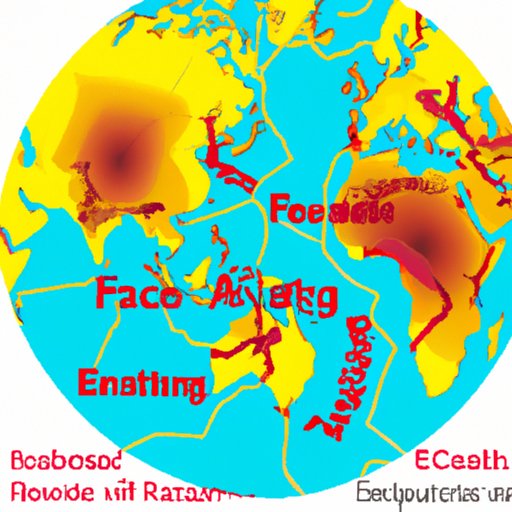Introduction
Earthquakes are one of the most destructive forces of nature, causing millions of dollars in damage every year and taking countless lives. But where are earthquakes most likely to occur? This article will explore the factors that contribute to where earthquakes are most likely to take place, examining the role of plate tectonics, seismic zones, and other natural phenomena. We will also analyze historical patterns in earthquake locations, mapping areas of the world that are at risk for earthquakes. Finally, we will provide recommendations for further research.

Examining the Factors that Contribute to Earthquake Occurrence
Earthquakes occur when two blocks of Earth’s crust collide and release stored energy. The movement of these plates is driven by convective currents deep within the Earth’s mantle, which cause the plates to move slowly but constantly. This process is known as plate tectonics, and it is the primary factor in determining where earthquakes will occur.
In addition to plate tectonics, seismic zones play an important role in earthquake occurrence. These are regions of the Earth’s surface that are particularly prone to earthquakes due to their geologic makeup. Seismic zones can be found all over the world, from the Pacific Ring of Fire to the Mediterranean Sea. The frequency and intensity of earthquakes in these regions can vary significantly from place to place.
Other natural phenomena can also affect the likelihood of earthquakes occurring in certain areas. For example, volcanic activity and large bodies of water can both increase the risk of earthquakes. Volcanoes produce large amounts of underground pressure, which can trigger seismic activity, while large bodies of water can absorb some of the energy released by earthquakes.
Analyzing Historical Patterns in Earthquake Locations
To better understand where earthquakes are most likely to occur, it is important to analyze historical patterns in earthquake locations. By looking at the locations of past earthquakes, we can get a better idea of where future earthquakes may take place. On a global scale, most earthquakes occur along the boundaries of tectonic plates, with the majority occurring around the Pacific Ring of Fire.
On a regional level, we can map out areas of the world that are particularly prone to earthquakes. In the United States, for example, the West Coast is at higher risk for earthquakes due to its proximity to the Pacific Ring of Fire. Other places at risk include Alaska, Hawaii, and Puerto Rico, which all sit atop active seismic zones. Similarly, countries like Japan and Chile have experienced frequent earthquakes due to their location on the Pacific Ring of Fire.
It is also possible to compare earthquake occurrence in different regions of the world. For example, the United States experiences more earthquakes than Europe due to its location on multiple active seismic zones. Similarly, the Pacific Rim is home to the majority of the world’s earthquakes due to its proximity to the Pacific Ring of Fire.
Conclusion
In conclusion, this article has explored the factors that contribute to where earthquakes are most likely to occur. Plate tectonics and seismic zones play a major role in determining where earthquakes will take place, while other natural phenomena can also affect their frequency and intensity. We have also analyzed historical patterns in earthquake locations, mapping out areas of the world that are particularly prone to earthquakes. Finally, we have provided recommendations for further research.


